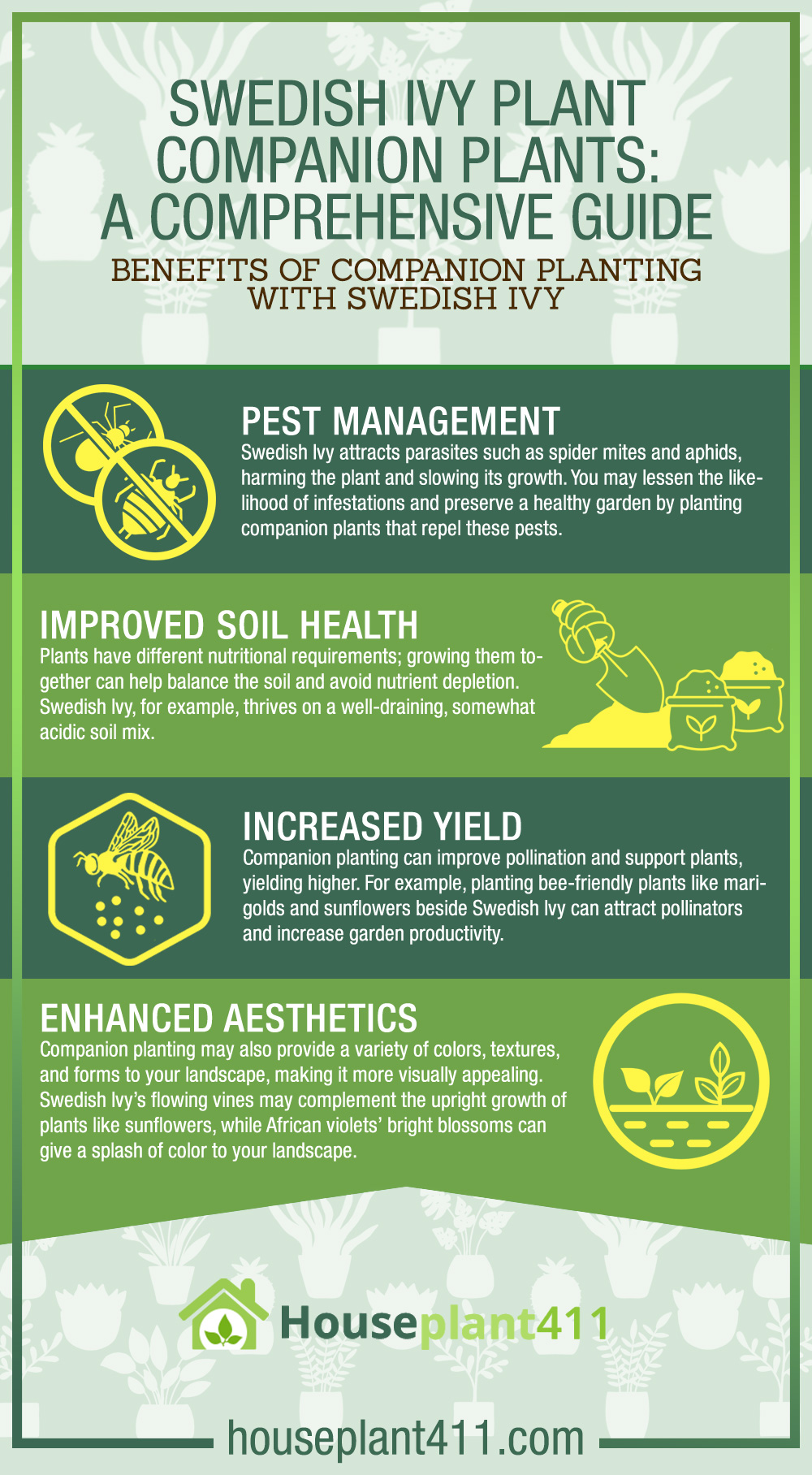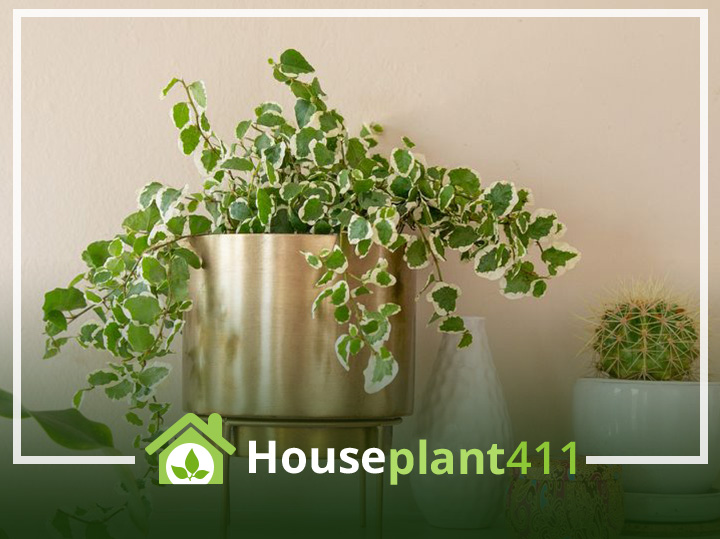You may have heard of the Swedish Ivy plant if you enjoy gardening. It is a common plant that can be grown both inside and outdoors and is well-known for its attractive look and easy maintenance. But did you know Swedish Ivy plant companion plants boost its advantages even more?
This post will review everything you need to learn about Swedish Ivy plant companion plants.
Introduction to Swedish Ivy
Swedish Ivy is a South African trailing plant. Because of its low-maintenance and appealing look, it has become a popular houseplant. The technique of cultivating two or more plants together for mutual benefit is known as companion planting. Planting Swedish Ivy with other appropriate plants can improve soil health, repel pests, and boost overall development.
Characteristics of Swedish Ivy Plant
Swedish Ivy has round, glossy foliage that resembles a coin. They have a pleasant fragrance and are delicate to the touch. This plant may reach two feet in length and four inches in width. It likes well-draining soil and bright, indirect light. Swedish Ivy is a perennial plant that may live all year if sheltered from the cold.
Benefits of Companion Planting with Swedish Ivy
Companion planting is a technique that has been used for centuries to promote healthy plant growth. Here are several benefits of companion planting for Swedish Ivy.
Pest Management
Swedish Ivy attracts parasites such as spider mites and aphids, harming the plant and slowing its growth. You may lessen the likelihood of infestations and preserve a healthy garden by planting companion plants that repel these pests. For example, planting garlic, chives, and mint beside Swedish Ivy will help discourage pests from hurting your plants.
Improved Soil Health
Plants have different nutritional requirements; growing them together can help balance the soil and avoid nutrient depletion. Swedish Ivy, for example, thrives on a well-draining, somewhat acidic soil mix. They can help replenish the soil with important nutrients when planted alongside plants with varied nutritional demands, such as nitrogen-fixing legumes like beans and peas.
Increased Yield
Companion planting can improve pollination and support plants, yielding higher. For example, planting bee-friendly plants like marigolds and sunflowers beside Swedish Ivy can attract pollinators and increase garden productivity. Planting tall plants, such as maize or sunflowers, alongside Swedish Ivy, offers support and shelter for the trailing vines.
Enhanced Aesthetics
Companion planting may also provide a variety of colors, textures, and forms to your landscape, making it more visually appealing. Swedish Ivy’s flowing vines may complement the upright growth of plants like sunflowers, while African violets’ bright blossoms can give a splash of color to your landscape.
Swedish Ivy plant companion plants can bring several benefits, such as pest control, enhanced soil health, greater production, and improved aesthetics. You may develop a successful and healthy garden by picking companion plants with comparable growth circumstances and complementing traits.

Companion Plants for Swedish Ivy
There are numerous companion plants for Swedish Ivy to pick from. These are a few popular options:
African Violet
African violets are distinguished by their vivid purple, pink, and white blossoms. They require the same lighting and watering requirements as Swedish Ivy, making them excellent companions. They may also give a splash of color to your yard while also purifying the air. African violets require soil that is slightly damp but drains well.
Spider Plant
Spider plants are another favorite Swedish Ivy companion plant. They are well-known for their air-purifying properties and can aid in removing toxins like formaldehyde and benzene from the atmosphere. Spider plants prefer a soil combination that drains well and bright, indirect light. They can also withstand low-light settings and are simple to maintain.
English Ivy
Both English and Swedish Ivy are trailing plants that complement each other nicely. They thrive in similar environments and can help fight pests like spider mites and aphids. English Ivy is a tough plant that can tolerate various lighting situations, from low to high. It prefers well-draining soil and regular watering.
Pothos
Pothos is a trailing plant that requires little maintenance and may grow in various lighting situations. It is well-known for its air-purifying properties and can aid in removing contaminants from the environment, such as formaldehyde, benzene, and xylene. Pothos prefer well-draining soil and regular watering.
Peace Lilies
Peace lilies are well-known for their lovely white blossoms and air-purifying properties. They can aid in removing toxins from the environment, such as benzene, formaldehyde, and trichloroethylene. Peace lilies require a well-drained soil mix and regular watering. They can also survive low-light settings, making them an excellent indoor partner for Swedish Ivy.
When choosing Swedish Ivy plant companion plants, consider their growing conditions and compatibility. Moreover, choose the ones that’ll also enhance your garden’s aesthetics.
How to Plant and Care for Swedish Ivy and Companion Plants
Planting Swedish Ivy and companion plants together is relatively easy. Follow these steps to ensure a healthy and thriving garden:
- Choose plants that require similar growing conditions, such as lighting and watering.
- Select a pot or container that is large enough to accommodate both plants and has adequate drainage.
- Fill the pot with a soil mix that drains properly.
- Place the Swedish Ivy and companion plants together, ensuring they are fairly spaced.
- Water the plants regularly and make sure they get enough light.
Wrapping Up!
Swedish Ivy plant companion plants can help improve the health and appearance of your garden. You may prevent pests, enhance soil health, and increase crop output by planting Swedish Ivy alongside appropriate plants. To maintain a healthy and successful garden, select plants that thrive in comparable circumstances and give them sufficient care.

